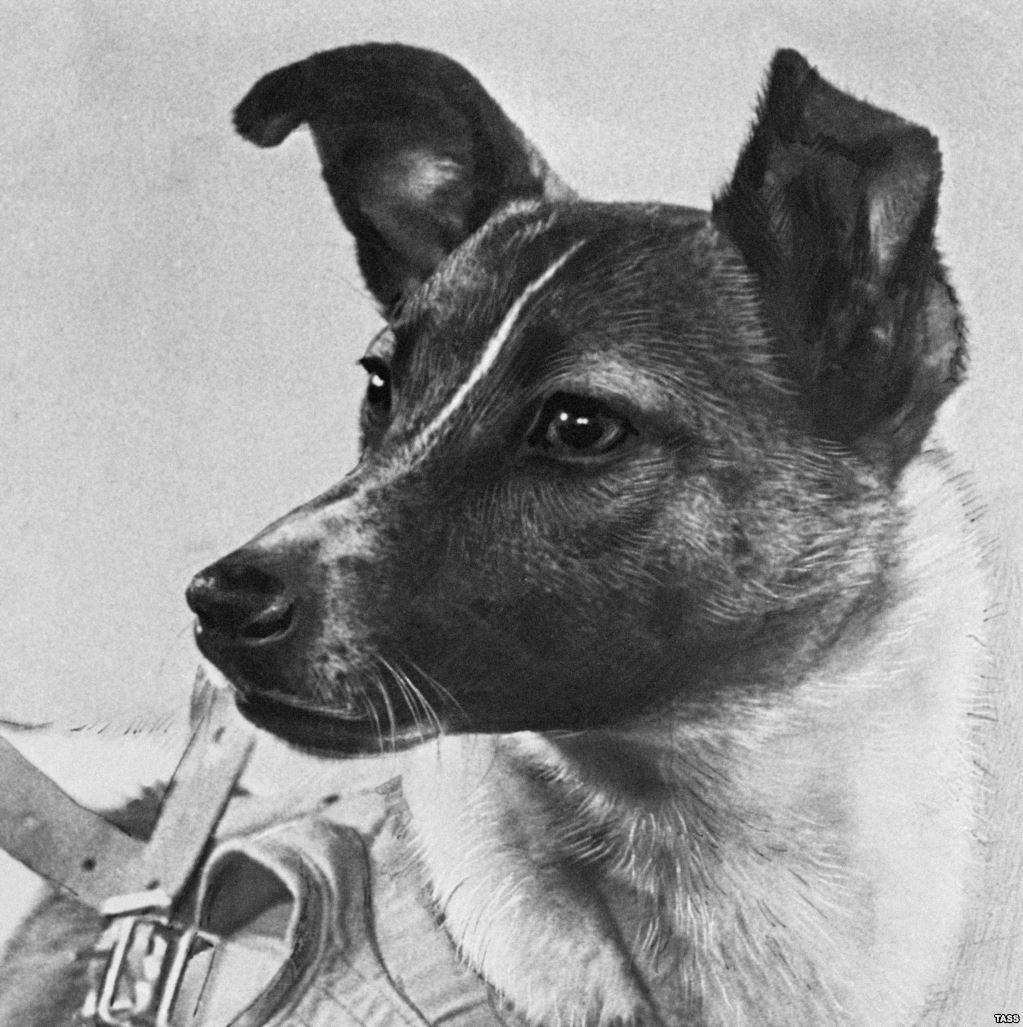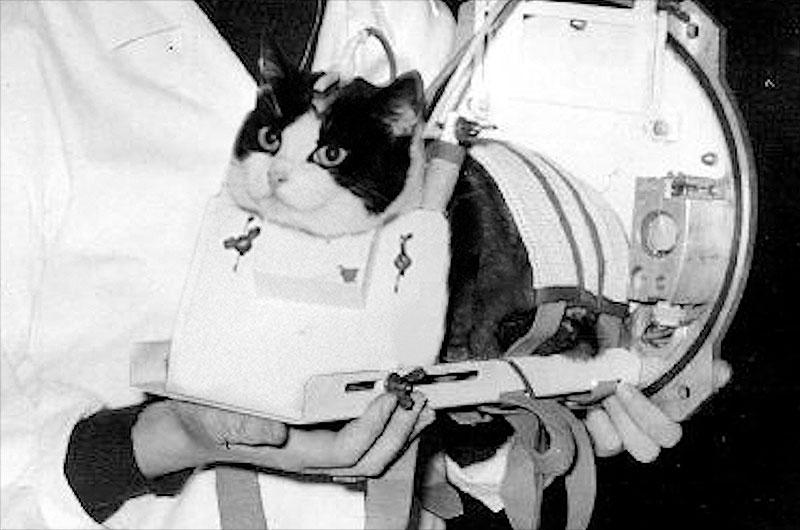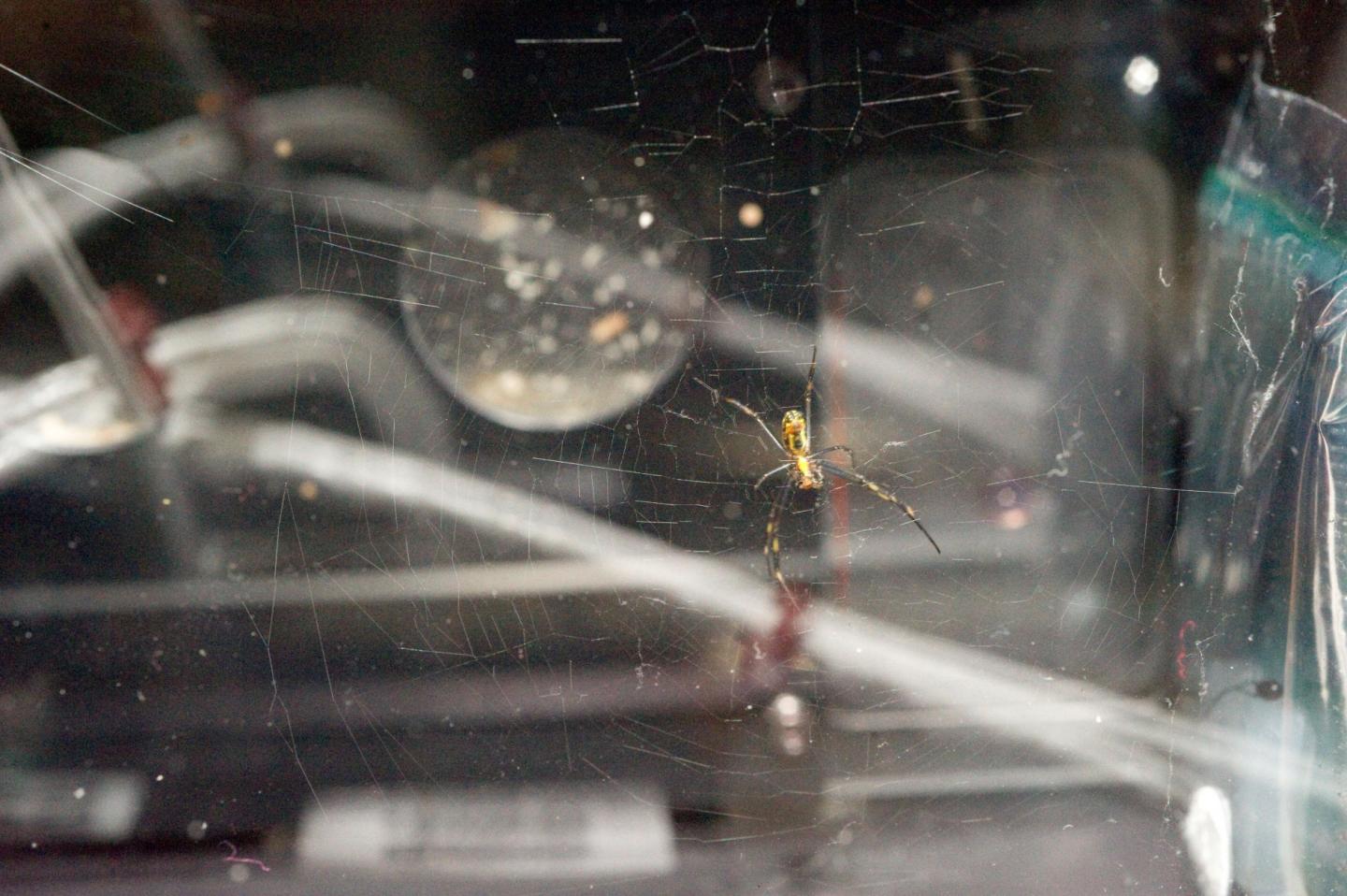What Was The First Animal To Fly In An Airplane?
Since the very kickoff of space exploration, animals have been used in space programmes. Find out what pioneering animals travelled in infinite, and which was the starting time to orbit the Globe.
What was the outset animal in space?
While many flights into space may have accidentally carried bacteria and other forms of life on board, the first living creatures intentionally sent into space were fruit flies. These were transported aboard a V2 rocket on twenty February 1947.
The fruit flies were launched from White Sands Missile Range in New United mexican states as part of a enquiry mission. The unnamed rocket travelled 67 miles into the air before parachuting back to World. NASA currently recognises the altitude of 66 miles (100km) every bit the point where infinite officially begins. Therefore, the fruit flies are considered the first animals e'er to reach the last borderland.
The V2 rockets were the world's get-go long-range guided missiles and were used by Frg during World War Ii. The missiles could wing at a top speed of iii,500 miles per hour and strike targets over 200 miles abroad. Following the war, the US seized many of these rockets and used them for research purposes, laying the groundwork for future space launches. Wernher von Braun, who designed the V2 was fifty-fifty involved in the designing of the Saturn V rocket for NASA.
The flies were the perfect passengers for the flight as their compact size, and relatively light weight made their storage easy and conserved on fuel consumption.
At the time, little was known as to the effects of catholic radiations on organic matter. As fruit flies have a similar genetic make-up to humans, they were seen as an eligible field of study for testing and enquiry. On the safe recovery of the flies' sheathing, the scientists plant that the flies' genetics had not been mutated past the radiation, which paved the way for hereafter human spaceflight.
What was the get-go animal to orbit the Earth?
In the 1940s and 1950s, the Soviet Spousal relationship and US space programmes sent numerous species of animals into space, including monkeys, mice and dogs. Nevertheless, these were suborbital flights, which meant the spacecraft passed into outer space earlier falling back to Globe without making an orbit.
The kickoff beast to brand an orbital spaceflight effectually the Earth was the dog Laika, aboard the Soviet spacecraft Sputnik ii on 3 Nov 1957.
Laika
Laika was a young, function-Samoyed terrier found as a stray in Moscow. She was chosen every bit the Soviet scientists believed a homeless animal would be meliorate equipped to endure the cold, hunger and harsh atmospheric condition of space travel. However, with inadequate oxygen and nutrient supplies, Laika's death in space was expected from the kickoff of the mission.
In their training before the launch, the canine candidates were placed in a series of enervating endurance trials and medical examinations. Among other tests, scientists examined how the animals would cope in the distressingly cramped space capsule. Laika and two other dogs (Albina and Mushka) were placed in increasingly smaller cages over several weeks. With her at-home temperament and grace under force per unit area, Laika was chosen. Vladimir Yazdovsky, the leader of the Soviet space mission, described Laika equally "quiet and charming."
Laika's spacecraft, Sputnik ii was fitted with a variety of innovative devices to proceed her alive. There was an oxygen generator which absorbed carbon dioxide, a oestrus-activated fan to regulate the temperature and the sheathing was stocked with enough food to keep the dog alive for 7 days.
In that location are conflicting accounts of Laika's death in space. The Soviet Union initially suggested she had died when the oxygen levels depleted or that she had been deliberately 'put to sleep' with poisoned food. In 1999 several Russian sources (such equally the scientists involved in the space programme) stated that Laika had died on the fourth orbit of the Earth after a failure in Sputnik two's temperature controls. On 14 April 1958 (after approximately 2,570 orbits), Sputnik 2 and Laika'southward remains left orbit and disintegrated on re-entering the Earth's atmosphere.
In 2008, nearly 50 years after the historic flying, a monument to Laika was finally installed outside Star City, a military facility in Russia where she was trained for her trip. The statue resembles a rocket that merges into a hand, launching Laika into space.
Animals that went to space
As well every bit the fruit flies and Laika, since the 1940s, a variety of animals take been sent into infinite including ants, cats, frogs, and even jellyfish.
To date, a total of 32 monkeys have flown in space. These species include rhesus macaques, squirrel monkeys and hog-tailed monkeys. Chimpanzees take also flown.
On 4 June 1949, Albert Ii became the showtime monkey in space, but he died on reentry when the parachute to his capsule failed. Ii other monkeys, Albert III and Four also died when their rockets failed.
A mouse was launched into space on xv August 1950 but did not survive the return journey.
In the 1950s, the US and the Soviet Matrimony launched a total of 12 dogs on various suborbital flights, Laika beingness the outset.
On 31 January 1961, the first hominid was launched into space. A chimpanzee named Ham was part of the U.s.a.-led Mercury infinite programme. A main role of the mission was to test whether tasks could exist performed in space, the results of which were instrumental when launching the starting time American in space, Alan Shepard, on 5 May 1961.
On 12 April 1961, Soviet cosmonaut, Yuri Gagarin (nine March 1934 – 27 March 1968) became the kickoff human to fly in space. He flew aboard the Vostok 1 and completed one orbit of the Earth, taking 108 minutes from launch to safely parachuting to Earth.
The French sent their first animate being, a true cat, into space on eighteen October 1963. Félicette, a Felix true cat, had electrodes implanted in her caput to transmit her condition equally she spent 5 minutes in weightlessness. She reached an distance of 100 miles and landed safely but was killed two months later on and so that scientists could examine her brain.
First animals to orbit the moon
The starting time animals to orbit the moon and return to Earth were two Russian tortoises aboard Zond 5. On xv September 1968, the tortoises were launched with plants, seeds and bacteria around the moon and returned to Earth seven days later. The capsule and its occupants survived reentry.
First animals in space facts
- The first dogs to return from infinite alive were Belka and Strelka ('Squirrel' and 'Little Arrow') launched on xix August 1960 past the Soviet space programme. Strelka gave birth to six puppies, ane of which was given to United states President John F Kennedy past the Soviet leader Nikita Khrushchev.
- The first fish in infinite were South American guppies. They spent 48 days in orbit on the Russian Salyut v spacecraft in 1976.
- In 1973, a common-cross spider named Arabella became the get-go to spin a web in space, thus providing an respond to the question of whether webs can be spun in zero gravity.
- An American monkey named Albert II went into space on a V2 in 1949 and a mouse in 1950. In the 1960s, guinea pigs, frogs, cats, wasps, beetles and a chimpanzee followed.
- In 2007, Russian scientists celebrated afterward a cockroach named Hope became the first creature to conceive in space - giving nativity to 33 cockroaches aboard a Foton-K satellite.
How many animals died in space?
As so many space missions have involved biological life, it is difficult to know exactly how many animals have died in infinite. In the early period of space exploration, the processes involved in spacecraft design and production were trial and error. This meant the animals had little risk of survival. Present, animals are still being sent into space, just the likelihood of survival is much greater.
How does space affect animals?
Similarly to how information technology affects humans, infinite can touch on animals in many unlike ways. Early infinite travel was used to examine how radiation would act on organic matter, exterior of World's protective magnetic field and atmosphere. Nowadays, many infinite inquiry missions involve examining how animals react and learn behaviours in microgravity.
An example of 1 of these experiments was with caterpillar moths aboard the Space Shuttle Columbia in 1982. The moths that were born on World and sent into infinite were unable to control their flying in microgravity conditions and then clung to interior surfaces. However, the moths that were built-in in space managed to float and wing, sometimes even making controlled 'landings'.
Why practice we ship animals into space?
The first journeys into space involving animals were used to test survivability and the potential for sending humans into infinite. Later, other scientific questions, such equally radiation and weightlessness were examined.
For example, worms share with humans similar changes in the expression of genes that regulate blood sugar, but as the former are more compact and reproduce very quickly, scientists can study many of them across an unabridged life span, unlike humans.
Source: https://www.rmg.co.uk/stories/topics/what-was-first-animal-space
Posted by: rawlsupocand.blogspot.com




0 Response to "What Was The First Animal To Fly In An Airplane?"
Post a Comment